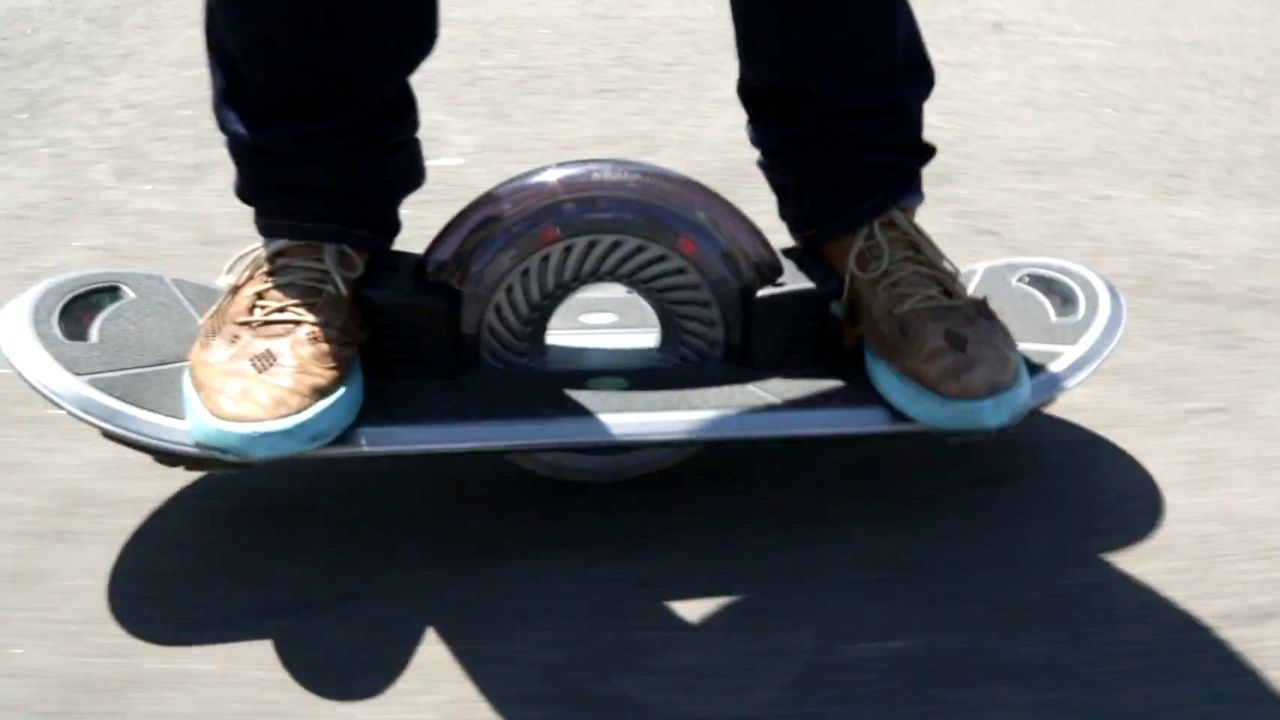The problem with the Hoverboard 360? It's not a hoverboard.

At some point during these holidays, the Hoverboard 360, has gained considerable popularity, and anticipation, as consumers waited to finally have a chance to ride the two-wheel motorized toy, made by the company of the same name.
The vehicle is basically a two-front wheel scooter, with no handlebar, which requires the rider to stand on both feet off the ground, with no leverage whatsoever, in a similar way as a regular skateboard, with the caveat that the board in question does not allow to put one foot on the ground when riding it, which most of the times, causes the board to spin on one wheel and eventually shake its rider off like a mechanical bull.
What could possibly go wrong?
For those expecting the Marty McFly experience, this is anything but. According to a mounting volume of videos on YouTube, Vimeo, Twitter, and more sources, the number of accidents while riding the Hoverboard 360 is not only comically high, it’s also becoming a cause for concern for consumers, who may think of a product advertised as a “self balancing motorized two-wheeled balance scooter that uses innovative gyroscopic technology”, as having the right amount of “balance” in the description, to be safe enough for grandpa to ride.
That is most definitely not accurate, as this type of vehicle is not meant for riders with little coordination, or no experience riding on rollerblades, or skateboards.
Beware of dangerous imitations
According to the Consumer Products Safety Commission, buyers should be aware of a number of issues pertaining with defective imitation Hoverboards being sold online, with a cheaper price tag. Most of these have been eliminated from stores like Amazon, however, the commission has released tips in regard to how to manage these products. For instance, aside from the obvious advice of always wearing a helmet, knee pads and elbow pads, Hoverboards should not be left charging overnight, as a number of Lithium-Ion batteries on certain Hoverboard models, were reported as having bursted into flames.
Fortunately, there’s better, as long as there is common sense.
At a price that borders that of a pricey smartphone, the Hoverboard 360 seems a rather expensive way to take a trip to the emergency room, however, one of the major competitors of the Hoverboard 360, called, simply “Hoverboard”, will set you back by quite a lot more, with its own mono-wheeled skateboard-shaped offering, starting at a cool three-thousand dollars.
This premium product features what seems to be quite a bit more tech, including a sonar and Bluetooth speakers, controlled through a mobile app, available to both Android and iPhone users.
One of the most interesting aspects of this device is the ability to customize it using a programming language designed for the board, called Hoverscript, which allows for a long list of hacks:
Hoverboard Inputs:
- The Rider's Weight
- Speed
- Linear Acceleration (in all three axes)
- Rotational Acceleration (in all three major planes)
- Tilt
- Sonar Values
- User Buttons (at each end of the board)
- Time
- Current
- Voltage
- Power
- Distance Traveled
- Wheel Position
Hoverboard Outputs:
- 32-Bit color in all lighted cosmetic features
- Tuning coefficients
- Charging rate
- Bargraph Displays
- Security Enable/Disable
- Sounds
- Music